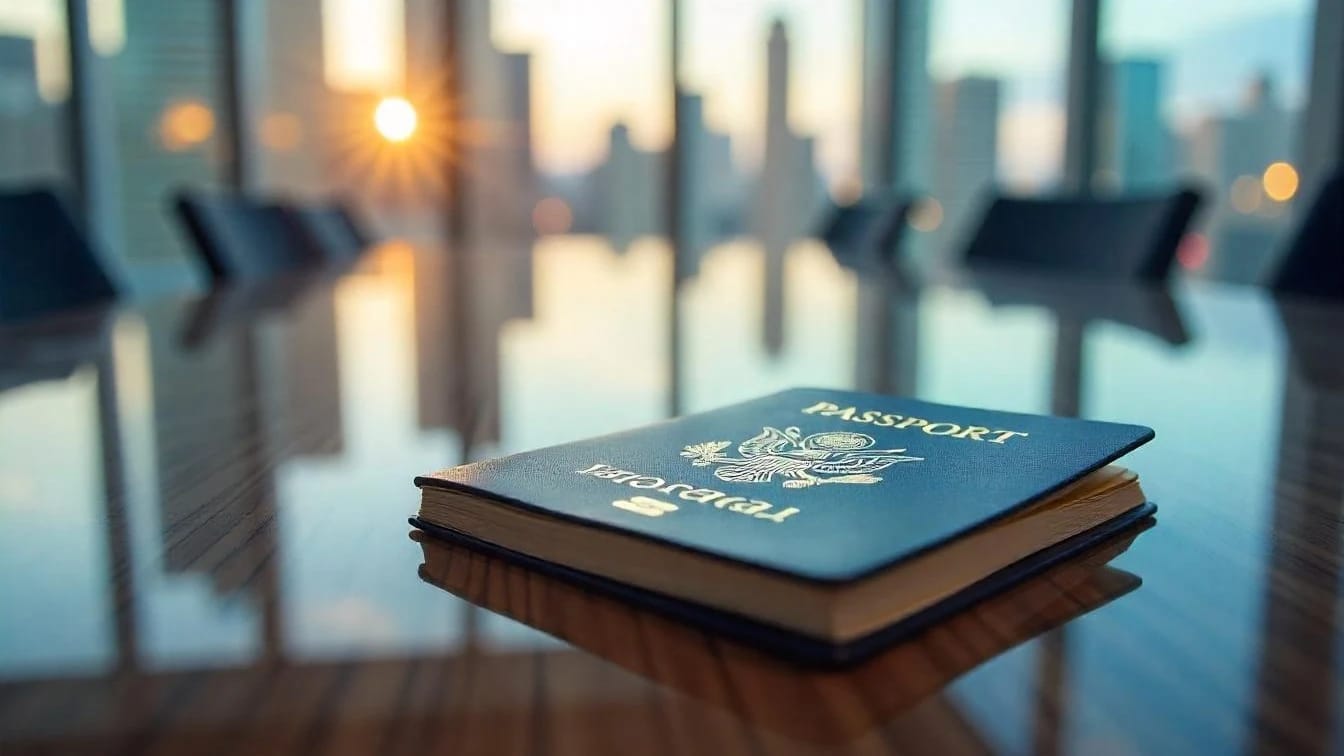Wondering how long the L1 visa takes in 2025? Here’s your complete guide to L1 visa processing time, from extension to renewal, including timelines for India, Canada, and blanket vs. individual L1 cases.

If you’re deciding to work in the U.S. on an L1 visa, the key question applicants ask is: “How long is this going to take?” In 2025, the L1 visa processing time can range from 15 days (with premium processing) to 4–6 months (without it), depending on a few key factors—your petition type, processing center, and where you’re applying from.
USCIS processing times for L1 individual petitions currently average 2 to 4 months, while consular processing can stretch even longer based on appointment availability and regional workload. For the latest timelines, it’s always best to check directly with USCIS. Connect with Beyond Border. Our experts can help you navigate the complexities and keep your timeline on track.
Not all L1 visas are treated the same. The timeline can shift depending on whether you’re applying for an L1A (executives or managers) or L1B (specialized knowledge workers). L1A visas typically process faster because they are often viewed as stronger candidates for future green card conversion and have a more direct fit under the EB-1C category. On the other hand, L1B visa processing time tends to be longer. The nature of “specialized knowledge” often requires additional scrutiny, which can lead to more Requests for Evidence (RFEs) or delayed approvals.
Now factor in whether you're applying under a blanket or individual petition, and the variability increases. L1 individual visa processing time through USCIS generally takes around 3–5 months. However, if your company already holds an approved blanket petition, your L1 blanket visa could process much faster.
If you’re applying from India, you’ll need to account for some extra considerations. The L1 visa processing time in India for 2025 depends heavily on where you’re filing. Chennai and Hyderabad consulates have traditionally handled the bulk of L1 blanket interviews, with appointment availability often within 3–5 weeks. Meanwhile, Mumbai and Delhi consulates tend to have slightly longer wait times, particularly for individual petitions that must first go through USCIS before reaching the consular stage.
For those applying under a blanket petition, consular appointments in India are typically easier to secure than those for H1B visas. That said, delays are still possible—especially during holiday seasons or end-of-year business rush periods. It’s a good idea to schedule your appointment early and check USCIS updates regularly to stay ahead.
Compared to India, L1 visa processing time from Canada tends to be more streamlined and predictable. Applicants in Canada usually face shorter interview wait times, experience less administrative processing, and benefit from more efficient communication between U.S. consulates and USCIS. Many Indian professionals who are already in Canada on work permits or intra-company transfers choose to apply from there due to the reduced wait times and smoother overall experience. If you’re eligible, this could be a quicker and more convenient path.
So, you’ve had your interview, everything seemed to go well—but now there is an unexpected delay. This is a common experience, especially for L1B applicants. While many L1 visa approvals are issued within a few days post-interview, others may be delayed due to factors such as PIMS (Petition Information Management Service) verification. If your petition details aren’t properly updated in the PIMS system, the visa officer might pause the process until it’s resolved.
Another cause for delays is administrative processing, often marked by a 221(g) notice. This may require you to submit additional documents or simply wait for further background checks. These steps can take anywhere from a few weeks to several months. While this can be frustrating, it’s not unusual—so use the time to prepare for your move and monitor any updates from the consulate closely.

If you're already in the U.S. and planning to renew or extend your L1 visa, it’s important to understand the timing. In 2025, the L1 visa extension processing time typically ranges between 2 to 5 months through USCIS. If you’re renewing your visa at a consulate abroad, the timing will depend on appointment availability, but it can often be faster if you qualify for the interview waiver program.
Don’t wait until the last minute—filing your extension before your current status expires allows you to continue working for up to 240 days while your petition is pending. If you're unsure when or how to file, it's wise to consult an immigration expert. At Beyond Border, we can help you navigate the timing so that you maintain your legal status and avoid any disruptions.
If you’re facing time-sensitive project requirements or tight operational timelines or you’re on a tight deadline, premium processing might be the solution. By paying an additional fee—currently $2,805—you can fast-track your petition to a decision within 15 calendar days. This option is especially helpful for urgent transfers, executive relocations, or situations where project timelines can’t afford delays.
Many companies choose premium processing to avoid disruptions in their operations, especially when moving key talent across borders. If time is critical for your case, it’s definitely worth discussing this option with your immigration counsel or a Beyond Border specialist.
For many Indian professionals, the L1 visa isn’t the final destination—it’s a stepping stone toward permanent residency. But the green card timeline varies significantly depending on your L1 category. Those on an L1A visa may be eligible for the EB-1C category, which often has current or minimally backlogged priority dates, making it one of the fastest routes to a green card.
If you're on an L1B visa, however, you'll likely be looking at the EB-2 or EB-3 categories, which are subject to long waiting periods due to country-specific caps and backlogs—sometimes stretching several years. This makes early planning essential. Beyond Border offers personalized green card strategies for L1 professionals so you can chart your long-term path with clarity and confidence.
Q1. How long does it take to process an L1 visa in 2025?
It can take anywhere from 15 days (with premium) to 4–6 months, depending on the petition type, location, and consulate backlog. Check USCIS for current timelines.
Q2. Is L1A processed faster than L1B?
Yes—L1A visas generally process faster due to clearer role definitions and stronger green card pathways.
Q3. How long is L1 visa processing time India 2025?
For India, it varies: blanket visas can take 3–5 weeks post-scheduling, while individual filings may take longer due to USCIS and consular wait times. Visit USCIS for real-time updates.
Q4. Should I use premium processing?
If you need fast results—yes. It reduces wait time to 15 days but comes at an additional fee. Many employers opt for it when timing is tight.
Q5. Can I work while my L1 extension is pending?
Yes. If you file before your current visa expires, you can continue working for up to 240 days while waiting for a decision. See USCIS for details.
To wrap it all up, the L1 visa processing time in 2025 will depend on several critical factors. These include whether you are applying for an L1A or L1B, whether your petition is individual or part of a blanket approval, whether you opt for premium processing, and the country you’re applying from—India or Canada. You’ll also need to account for possible delays after your interview, such as administrative processing or system checks.
Connect with our experts at Beyond Border to help you navigate the complexities and keep your timeline on track.

Looking for a faster, hassle-free L1 visa process?
Let Beyond Border pair you with an expert immigration attorney who knows how to navigate USCIS complex processes smoothly.